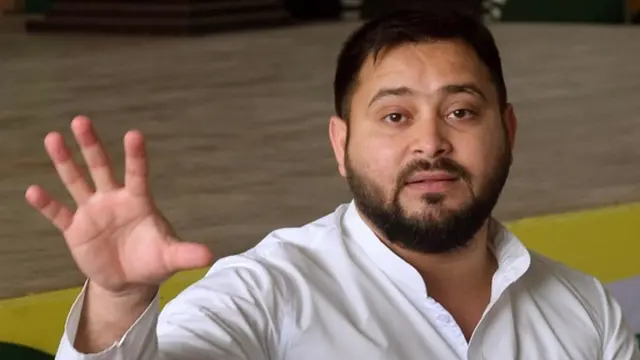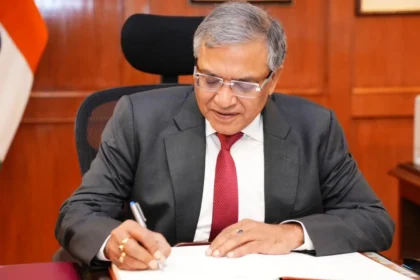Tejashwi Yadav’s Political Rise: A New Chapter in Bihar’s Leadership Journey
Ahead of the 2020 assembly elections in Bihar, Tejashwi Yadav was forced to step up. Lalu Prasad Yadav was lodged in Ranchi jail, serving time for his conviction in the fodder scam cases. Then a political novice, with only a little administrative experience as Nitish Kumar’s deputy, Tejashwi was suddenly pushed into the deep end of election canvassing, and, more importantly, of making strategic decisions that only one person, his father, made for his party, the Rashtriya Janata Dal, until then.
His mother Rabri Devi had been away from active politics for a while, having handed over the reins to her younger son to learn the ropes under her husband’s one-time friend and biggest rival Nitish Kumar. The RJD-JD(U) coalition had solidified a large chunk of backward classes and Dalits. The unprecedented victory of the alliance in the 2015 assembly results showed how powerful the two parties could be together. Such a social and political coalition was seen as a viable formula to counter the fledgling BJP under the leadership of Prime Minister Narendra Modi, who had made it possible for his party to win a majority on its own after decades of coalition politics at the Centre.
But destiny had other things in store for 35-year-old Tejashwi. The wily JD(U) chief jumped ship once again, right when the RJD-JD(U) combination had begun to catalyse a seemingly long-term organic unity among many inimical backward caste groups and Dalits.
A section of observers wrote Tejashwi off. His lack of political experience, his perception as a guileless rookie in a constantly-dynamic political landscape of Bihar, his father’s fading health, and also hearsay about conflicts in his family – all were seen as factors that could end the younger Yadav’s career before it properly began.
But Tejashwi wasn’t seen as one scrambling for support in the corridors of power. Instead, he chose to take on the challenge, and turned things around. He carried out his most extensive canvassing in the run-up to the polls, addressed nearly 250 rallies in the limited window for campaigning, averaging around 8-9 rallies per day, battled severe back pain, ate whatever he could get his hands on in transit, and traversed nearly 5000 kilometers of electoral ground.
Not merely that, he anchored his campaign around the most pressing concern of the state – unemployment. Lack of employment and distress migration have long remained the biggest worry in the state but none in the opposition, including his father, could address it politically. That was also a time when Congress was recovering from the humiliating loss that it had faced in the 2019 elections after running a full-blown campaign around alleged corruption in the Rafale aircraft deal and fatally ignoring the widespread concern of unemployment.
It took Tejashwi’s 2020 campaign for the larger opposition to make an issue out of unemployment nationally, as major opposition parties soon began to point at the Modi government’s persistent failure to generate jobs. His message struck, and he became an icon among the youth, across caste groups, and gradually began to be perceived as the only crusader against unemployment – so much so that he could steer the RJD to become the single largest party in the assembly, even when he couldn’t take his alliance past the majority mark.
At the same time, Tejashwi showed mettle in handling the complex political terrain of Bihar. He was more than aware of the fact that his father, although an icon of social justice in the state, had evolved into a figurehead of corruption and poor administrator. His abysmal record with law and order, too, became a readymade stick for his rivals to run the RJD down in an even game. Moreover, the RJD over time had transformed into a strictly Muslim and Yadav-dominated party, alienating large sections of Extremely Backward Classes and Dalits.
From the very beginning of his political career, Tejaswi has attempted to remedy these mistakes. He consciously looped in a number of EBC and Dalit leaders, tagged his party as not merely one of “M-Y” but of “A to Z”, implying his intent to reach out to all sections of the population. This is crucial as Tejashwi understood that navigating the caste matrix to create a much broader social coalition was the biggest challenge that comes in between being in power and remaining perpetually in the opposition.
As recently as June, 2025, Tejashwi took everyone by surprise when he cleared the way for Mangani Lal Mandal, a senior EBC leader who had recently switched to the RJD from JD(U), to become the party’s state president. Mandal succeeded the Rajput veteran leader Jagdanand Singh in the position. At the same time, he inducted several non-Yadav leaders into the RJD fold over the last few years.
In the run-up to the 2025 assembly elections, he remained steadfast in expanding his party’s social umbrella and brought in two EBC leaders Mukesh Sahani belonging to the Mallah community and I.P Gupta who is considered a leader of EBC Tanti community which has been demanding a Scheduled Caste status.
Allying with the Left parties also proved his political mettle, as along with the Congress and smaller parties, the Mahagathbandhan now represents not merely a wide social coalition but also a staunchly secular, anti-fascist alliance. On national issues like the SIR, or the Waqf Board law, the RJD has walked hand-in-hand with its national allies as a core constituent of INDIA bloc, unlike many other regional parties that have dithered from time to time.
Now when the Nitish Kumar government has entirely relied upon cash transfers and targeted welfare schemes as its road to yet another term in power, Tejashwi has consistently tried to offer a long-term vision for Bihar by raising issues of employment generation, public education and healthcare for all.
He has also consciously made an effort to debunk the RJD’s perception as a lawless force by diligently anchoring his party’s manifesto not only around development issues but also its so-called “zero tolerance” policy towards crime and corruption. His development agenda has defused the BJP’s campaign that centred around “illegal immigration”. The saffron party leaders are rarely being seen on the ground talking about “ghuspathiyas” now – something that they had all started out with a month ago.
Tejashwi has tried hard to plug the holes that have kept the RJD from power. He has shown political craft and prescience and offered a long-term development vision for Bihar that his father could not in his prime. He has consistently followed the coalition dharma and has had the heart to accommodate others even at the expense of his own interests.
As Bihar gears up for the assembly polls, his efforts may still need to be doubled for the RJD to shake off the perception that it is an exclusive M-Y tent, but these are surely new and dynamic beginnings for the party that has kept both opinions and the electorate polarised for years. Tejashwi still has large shoes to fill, but he has proven to be a worthy successor to his father.
Also Read: 95 Crashes in 14 Years: Is HAL Right to Build Russia’s Sukhoi Superjet SJ-100 in India








